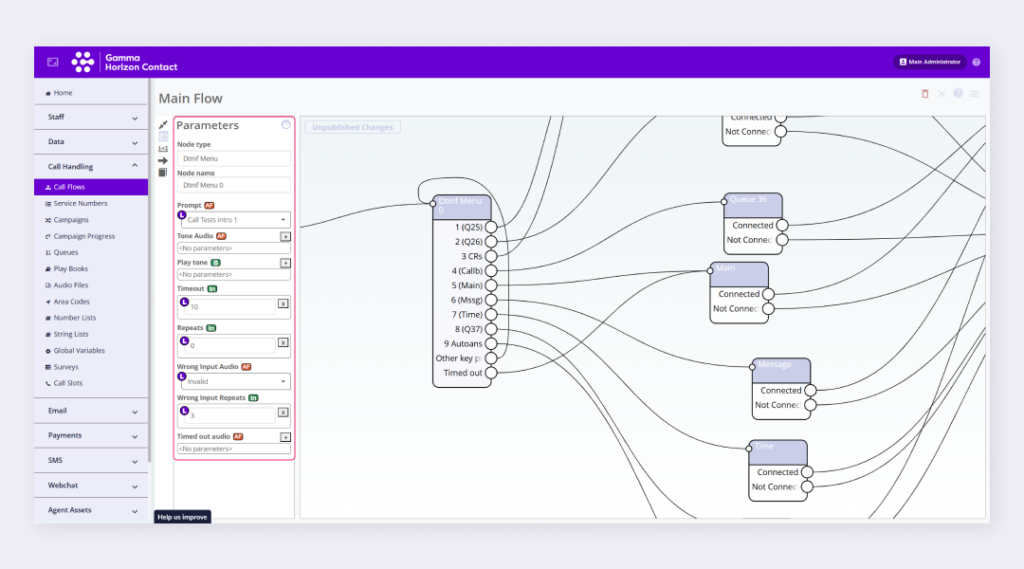Node types are prewritten blocks of instructions used within routing flows that carry out a specific function, such as playing audio or routing a call to a specific queue. Branches are used to connect node types in order to define a routing flow.
| Note: Your service provider will define what node types are available to use. |
The Anatomy of a Node Type #
A node type may be made up of branches and parameters which control how the node is handled:
Branches
Branches are the potential exits that a node may use once it has carried out its function. A service will travel from node to node using paths that connect branches to nodes until it reaches an end point in the routing flow, such as an End Call node.
When a service reaches a node it may carry out a specific function, such as playing audio. Once the function is complete the service will exit the node via a branch and follow the path to the next node. Some node types have only one branch, while others have more than one branch. Branches can be mandatory or optional.
E.G. A DTMF Menu node type allows you to add one or more optional branches to it, to represent the various DTMF keypresses available to callers.
- Mandatory Branch: A mandatory branch represents an outcome that you must consider when designing the routing flow. Any branches you see on a node when it is first placed in the routing flow are mandatory branches. You cannot delete mandatory branches from a node.
- E.G. The Outdial Request node type possesses a single mandatory branch called Next, which passes service flow to the next node.
- E.G. The Join Queue node type possesses three mandatory branches called Connected, Limited Reached and DTMF.
- Optional Branch: An optional branch represents an outcome that you may want to consider.
| Note: An outgoing path must be attached to every branch. |

Parameters
Parameters are the information used to configure the node to work as required. For a description of the different value types for parameters, see Parameter value types.
E.G. A Play Announcement node plays an audio file announcement to the caller. It requires an Audio Filename parameter, which specifies the name of the audio file to be played to callers. It has one branch (Next), which it follows when the audio file has been played.

Node Types #
Within Contact, there are numerous node types that can be used to create advanced routing flows. These are stored in the node library within the flow editor.

To learn more about individual node types such as their purpose and what branches or parameters can be set please refer to the Standard Node Types sub-category or use the links below:
- Call delivery and routing node types
- Caller interaction node types
- Branching node types
- Outdial node types
- Queue node types
- Email node types
- Webchat node types
- Work-item node types
- Company configuration node types
- External destination node types
- HTTP node types
- Integrated PBX node types
- Miscellaneous node types
Node Parameter Values #
The node parameters contain the information that tells the service how to behave when it reaches the node. Parameters can either be literal values, variable values or user-configurable values. See Node Parameter Values for more information.
